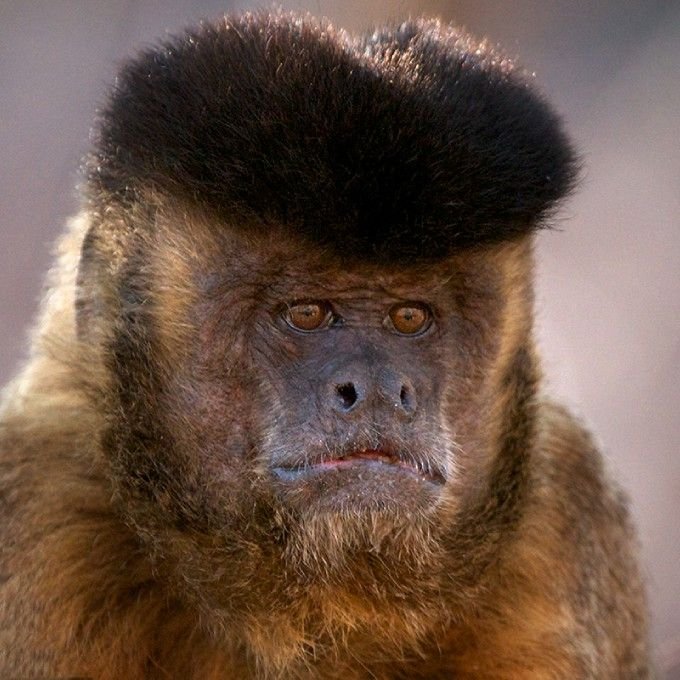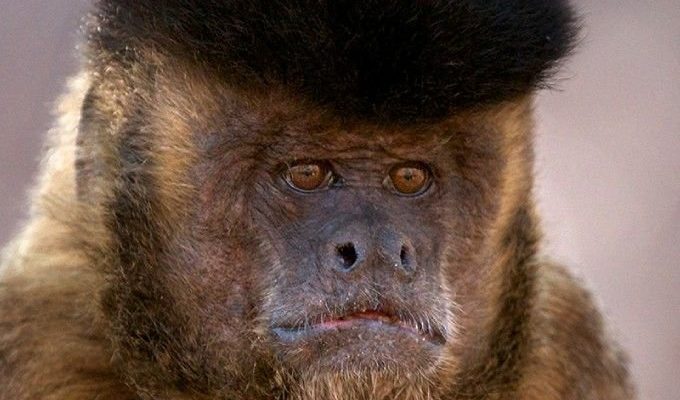
You might be wondering, what exactly makes the tufted capuchin special in the grand tapestry of evolution? Well, it’s not just its charming looks or clever antics. This monkey’s evolutionary history tells a compelling story about adaptation, survival, and the role of social structures in a species’ success. So, let’s dive into the fascinating world of tufted capuchins and uncover their evolutionary journey in a way that’s easy to understand.
What is a Tufted Capuchin?
To kick things off, let’s get to know the tufted capuchin. These monkeys, scientifically known as *Cebus apella*, belong to the family Cebidae. They’re easily recognizable thanks to their distinctive tuft of hair on top of their heads and their expressive faces, which seem to convey a range of emotions.
Physical Traits: Tufted capuchins are relatively small, usually weighing between 3.5 to 9.5 pounds. They have long limbs and a prehensile tail, which means they can use it to grasp branches—kind of like having an extra hand! Their fur is typically a mix of creamy beige and dark brown, which helps them blend into their forest surroundings.
Habitat: You’ll often find these monkeys across Brazil, Paraguay, and Argentina. They thrive in various environments, from moist rainforests to drier, scrubby areas. Their adaptability to different habitats is one reason why they’ve survived and flourished in a changing world.
Origin of the Tufted Capuchin
The tufted capuchin is believed to have originated around 2 million years ago. Its ancestors are thought to come from South America, where the climate and geography supported a rich array of primate life.
During their evolution, these monkeys faced various challenges, including shifting climates, changing food sources, and evolving predators. One of the key factors in their development was the availability of fruits and flowers, which became a staple in their diet. This shift likely influenced their physical traits, including their teeth and digestive systems, allowing them to process a wide variety of foods.
Fossil Record: The fossil record provides insights into these ancestors. While we may not have a complete picture, the remains of ancient capuchins show us how they evolved in size and shape. This information helps scientists trace the path that led to the tufted capuchin we know today.
Adaptations for Survival
Survival in the wild isn’t just about being fast or strong; it’s also about developing the right skills. Tufted capuchins have adapted in several fascinating ways that help them thrive in their environment.
Social Structure: One of the most striking features of tufted capuchins is their social behavior. They live in groups, typically comprising around 10 to 20 individuals. This social structure provides safety in numbers, helping them fend off predators and share resources.
Intelligence: These monkeys are known for their problem-solving skills. They’ve been observed using tools—like rocks to crack open nuts or sticks to extract insects. This ability to use tools is a significant marker of intelligence in primates and highlights their adaptability in seeking food.
Communication: Tufted capuchins have developed a complex system of vocalizations and body language. They use various calls to alert their group to danger or to signal finding food. This rich communication helps them maintain social bonds and coordinate group activities.
Interaction with Humans
The relationship between tufted capuchins and humans has evolved over the years. Historically, these monkeys have been part of human culture, and their intelligence made them popular in research and entertainment.
Research Contributions: Scientists often study capuchins to learn about primate behavior and evolution. Their use of tools and social interactions provides valuable insights into the workings of animal intelligence similar to humans.
Conservation Status: Unfortunately, habitat loss due to deforestation and hunting has threatened their populations. The tufted capuchin is listed as Least Concern, but conservation efforts are essential to protect their habitats and ensure future generations can enjoy these fascinating creatures.
The Role of Genetics in Evolution
Another crucial aspect of the tufted capuchin’s evolutionary history is genetics. Like all living beings, their DNA plays a vital role in how they adapt to their environment over time.
Genetic Variation: The tufted capuchin population displays genetic diversity, which is essential for resilience. This variation allows the species to adapt to changing environments and challenges, from diseases to climate change.
Comparative Studies: By comparing the genetic makeup of tufted capuchins with other primates, scientists can trace evolutionary lineages and identify how different species have adapted over time. This comparative perspective not only helps us understand the tufted capuchin but also places them within the larger picture of primate evolution.
Future Evolution and Conservation
As we look to the future, it’s important to consider how tufted capuchins will continue to evolve. The rapid changes in their environment pose both challenges and opportunities.
Climate Change Impacts: With climate change altering habitats, tufted capuchins may need to adapt to new conditions. This could involve changes in their diet, behavior, or social structures to survive in a rapidly changing world.
Conservation Efforts: Protecting their habitats is crucial for their survival. Conservation programs focusing on reforestation and sustainable land use can help preserve the natural environments tufted capuchins depend on. Supporting local communities in these efforts is equally important, as they play a vital role in the conservation of these monkeys.
The evolutionary history of the tufted capuchin is a rich tapestry woven through time, showcasing adaptation, survival, and the relationships these monkeys have forged with their environment and humans. Understanding this journey not only deepens our appreciation for these playful creatures but also highlights the importance of protecting their habitats.
As we face an uncertain future, the tufted capuchin reminds us that every species has a vital role in our planet’s ecosystem. By learning about their history and working towards conservation, we can help ensure that future generations can enjoy the charm and intelligence of tufted capuchins swinging through the treetops for years to come.

